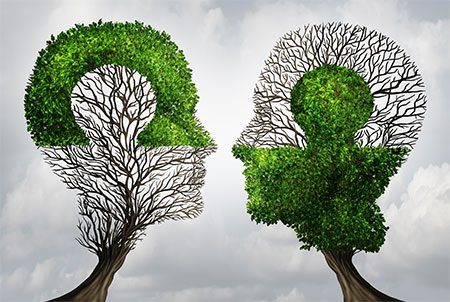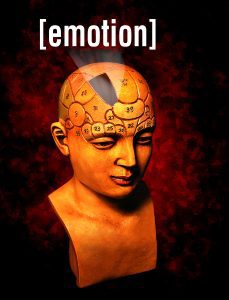CONFLICT RESOLUTION: What’s Required for Success
We’re frequently conflicted and we suspect that you are, too. In fact, we challenge you to think of someone who doesn’t have some kind of conflict that they’re dealing with. Human conflicts are ubiquitous and normal. The good news is, in most cases, people don’t have to go about conflict resolution alone—and this is certainly true for those who work in the public sector trying to get traction for their projects.

What is Conflict and Conflict Resolution?
Dictionary definitions of conflict vary. Some include references to war but others focus on far less dramatic incompatibilities. Though conflict and dispute are sometimes used interchangeably, they are not the same. Disputes are usually defined as something less serious than conflicts, or at least something that’s more short term and more easily resolved. People sometimes use one term or the other depending on how they’re trying to “spin” the issue. But regardless of which term you’re fond of using the most, the point is that people don’t always agree.
Volumes have been written on both dispute and conflict resolution, and solving disagreements has spawned a wide-ranging academic universe and a large consulting industry, as well as specialized training on the subject.
What Skills Do You Need?

Conflict resolvers come in all stripes and specialties and with an array of academic credentials that most often tend to match the subject area of the conflict. That’s certainly handy in some circumstances but not always as critical as it might seem.
Conflicts among people can usually be facilitated to a resolution, if those people are able and willing to focus their attention on facts, data and their differing opinions about those facts. A facilitator can usually urge people to take a step back and then help them do a little joint fact re-finding. Sometimes one group of people benefits from having more information about the issue. Or another group has the disadvantage of having less information about the situation or the facts. Those kinds of conflicts can usually be resolved if a facilitator can even the “information playing field.”
People Resolve Conflicts, Not Facts
But the reality is that conflicts and disputes are hardly ever resolved based on facts and data alone. People normally use their own view of the facts and their discriminate selection of data – or spin – as tools. Tools they use to support and justify the feelings and values that they already have around the issue. Most disputes and conflicts can only be resolved when a solution can be found that satisfies the variety of people’s emotions and priorities. That’s what makes crafting public policy so tough.
The core job of facilitators is to create safe, comfortable spaces for people to meet and for conversations to occur. Simple, at least in theory.
Humility, authenticity, transparency, and respect for the customer are also required to be successful and to build government (or business) credibility. There’s just no effective substitute for these traits. For conflict to be resolved and to achieve consensus decision making, people need the trust that comes from being treated well and with respect. It’s a foundation of effective public communication and conflict resolution at any level.
 Facilitators Can Only Facilitate Groups That Are Willing
Facilitators Can Only Facilitate Groups That Are Willing
Good, seasoned facilitators also typically have lots of creative meeting and conversation formats and tools of the trade to help make those effective meetings happen. There’s almost never a one-size-fits-all solution to meeting facilitation, but the more complex it gets and the more conflicted the issue and the parties, the more the rules of engagement change.
Conflict resolution facilitators operate in a fluid space and the bigger the conflict, the more malleable and creative the facilitator needs to be. As the emotions of the parties rise and their core values and priorities harden into intractable positions. It then becomes more difficult to facilitate any kind of resolution.
There’s a truth about facilitation that most facilitators don’t usually talk about with their clients or even the people that they’re supposed to be working with, but we’re going to spill the beans right here. The truth is that facilitators are only able to facilitate groups that are willing to be facilitated.
A big part of the stage-setting and pre-planning that goes into convincing people to have a reasoned conversation with other people that they disagree with, and possibly don’t like, is to establish the kind of space and scenario that the participants will actually buy into and allow to happen. With the toughest conflicts, the process has to start well before you even ask those people to come together to talk.
Moving People From Emotion to Reason
 This is about a different level of conflict resolution and it’s where we, The Participation Company, work best. This level involves the emotional intelligence, human behavioral analysis, and skillset to move people from their emotional states of mind. We use those skills to get them to the state in which they’re willing to have a reasoned conversation about the facts.
This is about a different level of conflict resolution and it’s where we, The Participation Company, work best. This level involves the emotional intelligence, human behavioral analysis, and skillset to move people from their emotional states of mind. We use those skills to get them to the state in which they’re willing to have a reasoned conversation about the facts.
Projects and meetings that require building consensus – a decision that the parties can live with – invariably fail when people are driven and ruled by their emotions. When our emotions, determined by brain chemistry, dominate our thinking, we all tend to make pretty bad decisions.
People who are guided primarily by their emotions don’t engage with others very well. At this emotional level, people don’t merely see others as wrong, they see them as evil. Simply ignoring these emotions and reactions or just dismissing how they feel doesn’t accomplish very much. The facilitation challenge is acknowledging and dealing with the emotions, agreeing on a problem, exploring common ground and creating an environment that allows conversations to take place emanating from people’s rational brains – the cerebral cortex.
Moving people from a mostly emotional mindset to one that is more reasoned requires a particular set of skills. A lot of facilitators simply don’t have the experience or training to manage.
The Same Language, Different Dialects
Serious research into understanding and working with the perceptions and behavior of angry and frightened people has been going on for a few decades. Much is now being written about the political divide in the U.S. and the problem of growing government gridlock.
There are no easy answers, but from a distance, it seems that much of the social psychology and behavioral science behind the various research and wide-ranging analysis are grounded in many common elements. It’s like the same language but with slightly different dialects.
Conflict resolution when conflict exists is the only way to get things done in a lasting, durable, sustainable (fill in your own description here) way. It’s the only way to avoid the endless cycle of decisions being made, and then overturned, by the most powerful or influential group at that particular moment.

 Facilitators Can Only Facilitate Groups That Are Willing
Facilitators Can Only Facilitate Groups That Are Willing